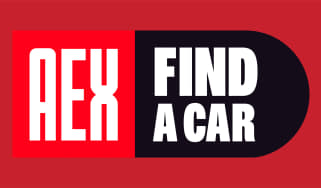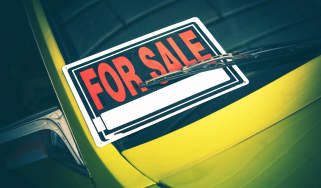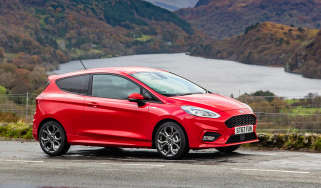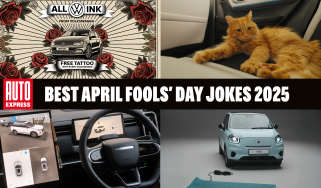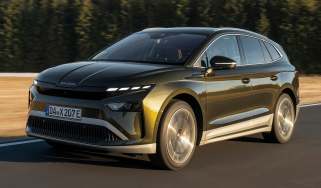What car types are best for resale value?
The latest data shows it’s good news for sports car and SUV fans, less so if you’ve just bought an S-Class
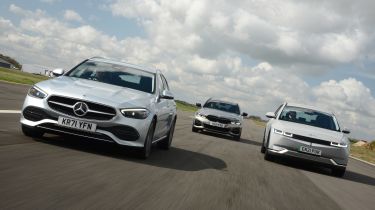
You’ll have often heard it mentioned that after a house, a car is the most expensive purchase you’re likely to make in your life. And while our tastes in cars are affected by all kinds of factors, from practicality and performance to simply how a car looks parked in front of the house, the big financial commitment means consumers may be drawn to cars that hold onto their value well, too.
With that in mind, we have some good news if you’ve bought a sports car, large SUV, or premium hatchback recently, as the latest data shows that all three hold more than 50 per cent of their value after three years and 36,000 miles of use, on average. The residual value picture is less rosy for luxury car buyers and those with a non-premium family hatch, which retain under 43 per cent and 44 per cent of their original on-the-road list price respectively.
The figures we’ve analysed come from the used car market experts at VIP Data, and cover the retained value of every mainstream new car on sale. By dividing those cars into the familiar market sector categories we use here on Auto Express, we can help you understand the depreciation performance of the kind of cars you might be interested in. Notable patterns quickly start to emerge, with some categories of vehicle holding their value significantly better than others.
The best car types for residual value
With a retained value of 52.38 per cent after three years, sports cars top the table, with the sporty Alpine, Morgan, and Lotus all having individual retained values of more than 57 per cent. This could be a result of how few sports car models remain on the market, and how expensive all but a handful of those models are – leading many buyers to hold off on buying new, and pushing up demand for cars hitting the market a few years down the line. If you’re one of the lucky few who can afford a brand new sports car, you’re sure to have plenty of buyers knocking on your door when it comes time to sell.
Interestingly, MPVs are another category relatively high up the table that may be benefitting from a lack of supply relative to demand. Only a few manufacturers now offer a proper seven-seat people-carrier in their range, but there are still families out there that need them. MPVs have a retained value of 49.16 per cent in VIP Data’s figures and there are signs that manufacturers might be waking up to the demand. New models like the Volkswagen ID.Buzz and Lexus LM have recently arrived, resurrecting the previously unfashionable MPV formula alongside the existing range of van-based MPV models.
The same goes for large SUVs, with the prestige of these imposing cars still clearly generating plenty of demand on the used market. Land Rover tops the brands list with its cars currently holding onto 58.65 per cent of their value. The SUV category as a whole sits at 52.05 per cent after three years or 36,000 miles, and while the values of small and medium SUVs aren’t quite as robust after the same period, at 48.24 and 47.62 per cent respectively, both still appear in the top half of the car types list – the SUV trend is showing no signs of slowing down.
In third position, holding more than 50 per cent of their value, are microcars, though these are a bit of an outlier, with only a handful on sale and their low prices resulting in relatively slow depreciation. The £8,000 Citroen Ami is probably the best example of the breed.
‘Premium’ pays for hatchback buyers
More relevant to most buyers is the stark difference between premium hatchbacks like the BMW 1 Series and Mercedes A-Class, and their conventional family hatch equivalents, like the Kia Ceed and Vauxhall Astra. While the former sell for 50.04 per cent of their new value on average after three years, the latter only hold on to 43.76 per cent.
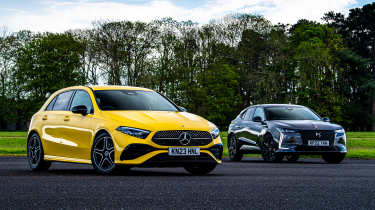
Objectively the premium models don’t offer a great deal over their more humdrum counterparts, with similar levels of space, economy, and performance, but this is clearly a sector where image is all. If you can afford the extra money every month, this could be one type of car where it’s really worth paying the extra up front and losing less in the long term.
Further down the list both superminis and supercars perform well (superminis seemingly bolstered by Dacia, whose tightly priced cars hold nearly 54 per cent of their value after three years), but it’s not such good news for large family cars, executive cars, and compact executive cars.
The worst car types for depreciation
Large family cars only retain around 45.6 per cent of their value after three years, and both executive car classes are in the 44 per cent range – perhaps a result of the ubiquity of these models, especially in company fleets, flooding the market after they’re a few years old. Plus the strong desirability of large and mid-size SUVs that ostensibly fulfil a similar role.
And worst of all are luxury cars, which on average will be worth only 42.73 per cent of what they cost new, after three years. This, at least, is nothing new: big, thirsty, heavy luxury models are subject to the changing whims and fashions of those who buy them new, and used buyers are a little more reluctant to take on their high fuel and servicing costs a couple of years down the line. Brands like Genesis, Maserati, and even Audi are all towards the bottom of the brands list for retained value, dragged down by big luxury and grand tourer (GT) models that aren’t fashionable SUVs.
Of course, if you’re a used buyer, then you also now know where to search for the biggest bargains: executive cars, luxury cars, and mainstream family hatchbacks. The new car buyer’s loss is the used car buyer’s gain.
The best and worst car types for depreciation
| Car type | Average OTR price | Average 36-month, 36k-mile part-ex value | 36-month, 36k-mile % of OTR retained | |
| 1 | Sports car | £96,375.08 | £51,837.40 | 52.38% |
| 2 | Large SUV | £96,909.17 | £50,570.45 | 52.05% |
| 3 | Micro Car | £18,458.80 | £9,627.50 | 50.23% |
| 4 | Premium hatch | £41,078.25 | £20,729.21 | 50.04% |
| 5 | MPV | £49,719.00 | £25,453.97 | 49.16% |
| 6 | Supermini | £27,051.02 | £13,122.54 | 48.62% |
| 7 | Small SUV | £32,976.84 | £15,853.35 | 48.24% |
| 8 | Supercar | £170,025.72 | £81,202.78 | 47.92% |
| 9 | Medium SUV | £51,053.42 | £24,209.09 | 47.62% |
| 10 | Pick-up | £68,581.00 | £32,331.25 | 47.23% |
| 11 | City car | £23,928.89 | £10,985.42 | 46.18% |
| 12 | Large family car | £45,313.56 | £20,615.00 | 45.63% |
| 13 | GT | £144,883.04 | £65,125.22 | 44.41% |
| 14 | Compact executive | £57,795.74 | £25,562.70 | 44.34% |
| 15 | Executive | £71,977.94 | £31,936.69 | 44.23% |
| 16 | Family hatch | £34,414.64 | £15,070.48 | 43.76% |
| 17 | Luxury car | £127,061.50 | £56,574.21 | 42.73% |
Did you know you can sell your car with Auto Express? Get the highest bid from our network of over 5,500 dealers and we'll do the rest. Click here to try Auto Express Sell My Car now...
Find a car with the experts


